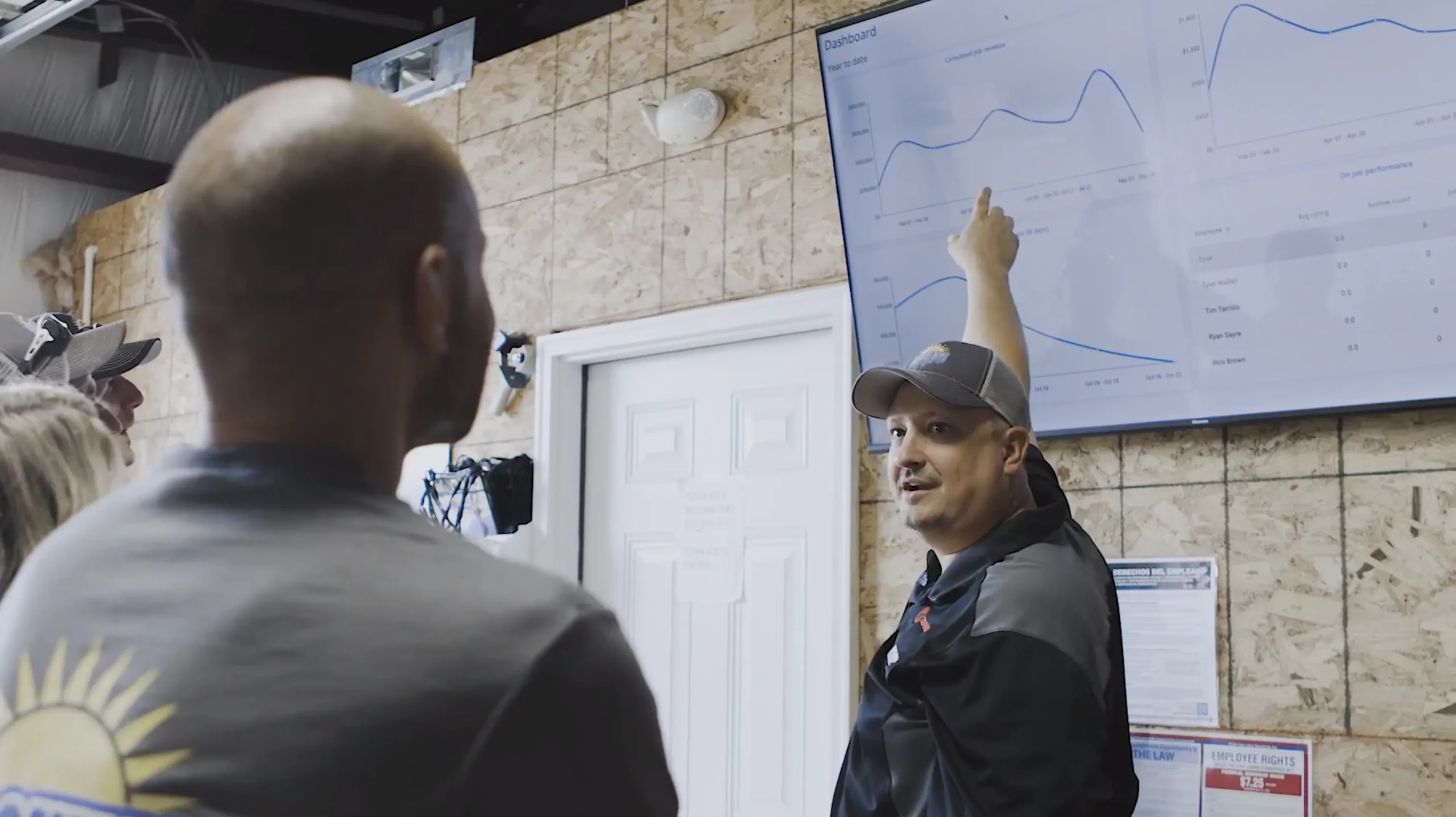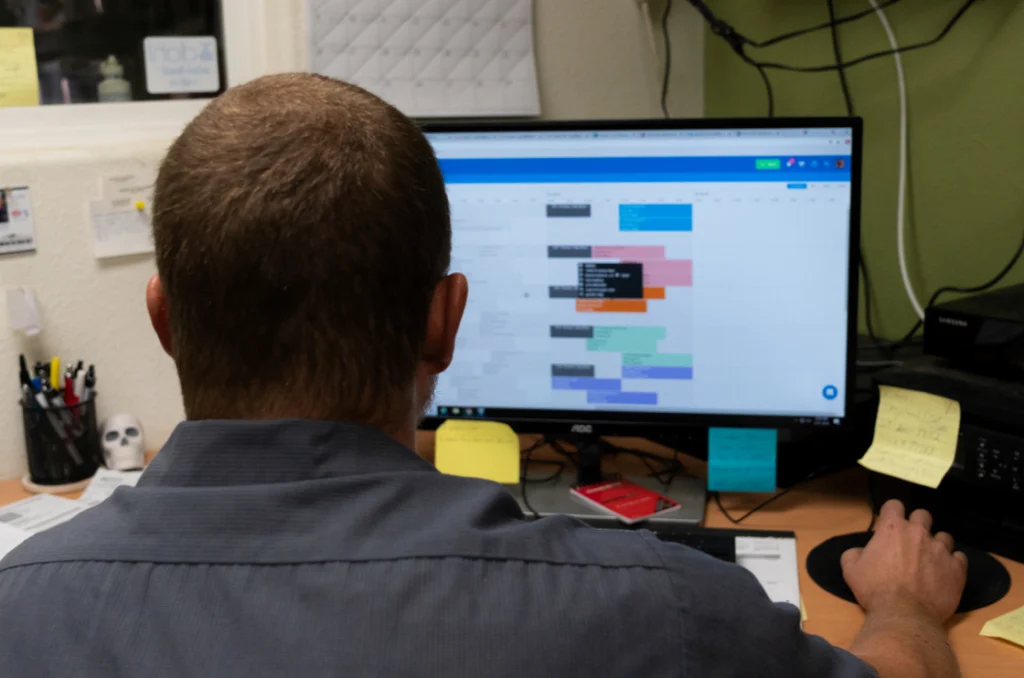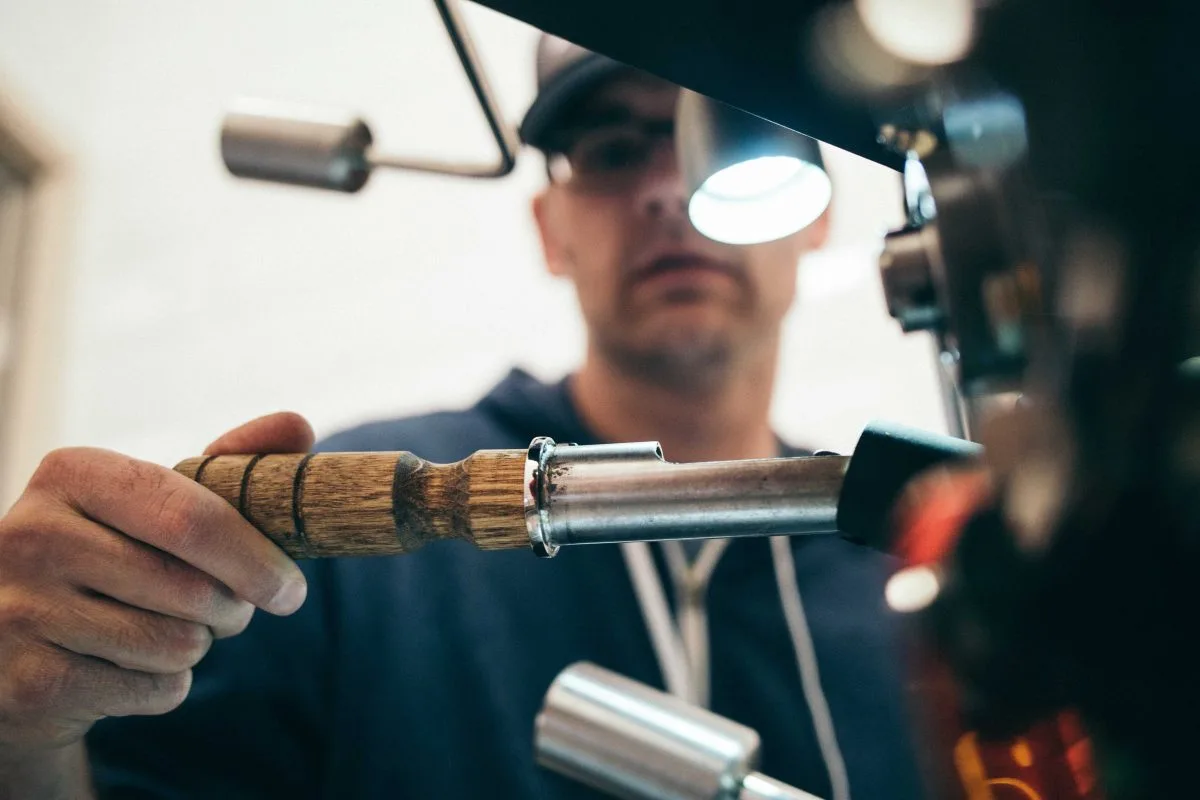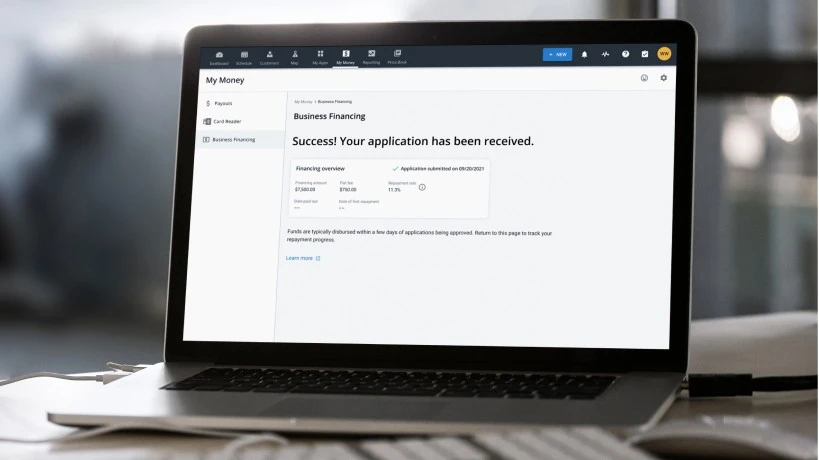
In the home services industry, correctly pricing plumbing jobs could be the difference between running a profitable plumbing business and a struggling one. That’s why the right pricing shouldn’t be just about covering your costs – it’s about how much you value your expertise, delivering a superior customer experience, and ultimately, securing the future of your business. Luckily, there are tons of online resources to help you figure this all out. From plumbing cost estimators to flat rate calculators, there are many ways to calculate a pricing structure that works for you.
As we dive into what plumbing businesses should be doing in 2024, understanding how to price plumbing jobs efficiently and effectively has never been more critical in building a successful business. This guide aims to arm you with the knowledge, tools, and resources needed to structure your pricing models, which in turn should improve your company’s growth in this competitive market.
Digging into the Basics of Plumbing Job Pricing
Before we dive into specific pricing strategies, it’s important to know the fundamentals. Pricing in plumbing, or any trade for that matter, is about more than marking up materials or setting a random hourly rate. It’s a holistic process that considers various factors, including material costs, labor burden, overhead expenses, and profit margin goals. At the end of the day, understanding these elements is the foundation for how to price plumbing jobs accurately.
Influencing Factors
Before strategizing a pricing structure, there are several variables to consider that impact the plumbing industry specifically. However, many of these influencing factors also impact other trades. For example, market demand, the complexity of a job, the experience level of your technicians, and the operational costs of your business all play a role in where pricing lands. Another consideration is regional competition and the specific needs of your target demographic (potential customers). We recommend taking time to do a little market research, even to the point of requesting some quotes, from local competition. This will give you a better idea of the average cost for these plumbing services in your area.
Avoid Common Pitfalls
As with every business, there are always pitfalls you want to avoid – one is underestimating the importance of accurately calculating costs and setting prices. More specifically, pricing that doesn’t reflect the value of the service provided. The immediate consequence? Profit loss. The long-term consequence? Charging too little (or too much) can devalue the service in the eyes of customers. You can avoid these pitfalls by ensuring your pricing strategy is data-driven (using your research) and reflective of the quality service you provide.
Step 1: Calculate material costs
As you can imagine, material costs can vary significantly from job to job – it really just depends on the scope of work for the project. Accurately estimating these costs is necessary for setting a price that covers your expenses and leaves room for profit.
How to estimate your material costs
To estimate material costs, use the formula:
Total Material Cost = (Unit Cost x Quantity) x local sales tax
This calculation ensures you account for all materials needed for a job. Charging too little on material costs will cut directly into your bottom line.
Step 2: Estimate labor costs
Labor costs are often the most significant expense in plumbing jobs. Learning to calculate these costs will help ensure you get the best profit margin possible.
How to calculate hourly labor cost
The formula for hourly labor cost is:
Hourly Labor Cost = Hourly Wage + Benefits + Additional Labor Expenses
Remember, this is the formula for each individual. You will want to add the labor cost for each employee working on the project together to get the full cost.
Step 3: Account for overhead expenses
Overhead expenses include all the costs of running your business that aren’t directly tied to specific jobs, such as rent, utilities, vehicle expenses, and marketing. The larger your business grows, the more this expense will grow; however, investing in things like marketing, a vehicle, or a brick-and-mortar location goes a long way in legitimizing your business and gaining notoriety in your area.
How to calculate your overhead costs
Overhead Cost per Job = Number of Jobs ÷ Total Overhead Costs
This calculation distributes your overhead across all jobs, ensuring each contributes to covering these expenses. This is something you can forecast at the beginning of each fiscal year and can help you set goals for projects over the course of the year. For instance, if you plan to buy a new work truck, you can estimate how many jobs you’d need to complete in order to cover the cost and maintenance of the vehicle. This strategy supports steady growth over time and can help you from making risky decisions that could impact your bottom line.
Step 4: Determine your profit margin
Profit margin is a financial metric used to evaluate the profitability of a business, product, or service. This number represents the percentage of revenue that exceeds the cost of goods sold or the expenses involved in providing your service. Essentially, it measures how much out of every dollar of sales a company actually retains in earnings.
How to calculate your profit margin
Profit Margin = ((Total Revenue ÷ Total Revenue) − Total Costs) × 100
This percentage reflects the portion of revenue that remains after covering all costs and expenses.
Get In Touch: 858-842-5746
Let us earn your trust
See plan options and feature breakdown on our pricing page.
Step 5: Choose a pricing model that works for you
A pricing model is a framework that businesses use to determine the price of their products or services. It includes the methods and principles applied to set prices. Again, your goal as a business is to maximize profitability, market share, and customer satisfaction.
Time and Materials (T&M) pricing
This model charges for the actual time spent and materials used on a job. It’s transparent but can be unpredictable for customers. Most customers want to know the cost of the project upfront as hours can unexpectedly add up, potentially risking customer trust and satisfaction.
Flat rate pricing
Flat rate pricing offers a fixed price for specific services, simplifying billing, and making costs predictable for customers. Use Housecall Pro’s Plumbing Flat Rate Software feature to streamline this process. Flat rate pricing is easier to calculate with common plumbing services. To see which services are popular in your area, check out local competitor websites.
Hourly pricing
Charging an hourly rate is straightforward and ties pricing directly to the plumber’s time, but it doesn’t take materials into consideration.
The average hourly rate for a licensed plumber in 2024
Understanding the average hourly rate for a licensed plumber will give you perspective and guide you to competitive and fair pricing for your plumbing services. Of course, these rates can vary significantly based on experience, location, and the complexity of the job. Let’s take a look at typical hourly rates (as seen below) for plumbers, categorized by their level of expertise and responsibilities.
Please note that these figures are meant to serve as a general guide, and actual rates may differ based on your specific location and the unique qualifications and experience of your plumbing professionals.
Apprentice Plumber: Apprentices are those who are in the process of learning the trade through hands-on experience under the supervision of more experienced plumbers. They typically earn an average of $20 per hour.
Journeyman Plumber: After completing their apprenticeship and passing the required exams, plumbers reach the journeyman level. Journeymen can work independently and have an even broader skill set than apprentice plumbers. Their hourly rates usually range from $27 to $35.
Master Plumber: Master plumbers have reached the highest level of certification, often requiring years of experience and passing a state-specific exam. They can handle complex plumbing tasks, manage projects, and supervise other plumbers. Master plumbers’ hourly rates can vary widely but generally start at $30 and can go up to $45 or more.
As we’ve said, it’s important to adjust these rates based on the cost of living and the demand for plumbing services in your area. Additionally, plumbers may charge higher rates for emergency services or work performed outside of standard business hours (we’ll cover that later in this article).
For the most current and region-specific information on plumber rates, consulting local trade organizations and doing your own market research can provide you with better, more current data. Websites such as the Bureau of Labor Statistics (BLS) in the United States also offer detailed labor market data, including wage estimates for plumbers by state and metro area, ensuring you base your pricing on the most reliable and up-to-date information.
Flat rate vs. hourly pricing
Choosing between flat rate and hourly pricing involves considering your business model and customer preference. For more insights, read this comprehensive comparison of flat rate vs. hourly pricing for the trades.
Hybrid pricing
Hybrid pricing combines elements of both flat rate and hourly models, offering flexibility and meeting diverse customer needs.
Step 6: A customer-centric approach to estimates
Imagine hiring someone to put a new roof onto your house, and when it comes time to pay the bill, the cost is hundreds or thousands over the quote initially provided to you. That is bad for the customer and bad for the business.
As a plumbing business, prioritizing clarity and professionalism will go a long way in setting the right expectations. Using Housecall Pro’s plumbing cost estimator feature can help streamline this process. This tool not only helps create detailed and accurate estimates but also ensures they are presented in a clear and professional manner. If your goal is to enhance customer trust and transparency, this tool helps. For more information and to give the tool a try, visit Housecall Pro’s Plumbing Estimating Software.
What to include in a plumbing estimate
A comprehensive plumbing estimate should include several line items to ensure clarity and prevent any misunderstandings with your clients. Here’s what to include:
- Detailed Description of Work: Clearly outline the scope of the plumbing work to be done (be as specific as possible).
- Material Costs: List all materials needed for the job, along with their costs.
- Labor Costs: Include the estimated hours and the hourly rate for the labor involved.
- Overhead Costs: Account for a portion of the business overhead costs in the estimate. This doesn’t have to be its own line item, but it should be worked into your fees.
- Total Estimate: Provide a clear total of the estimated costs. Some businesses make this total a larger font or different color to make sure it’s very clear.
- Payment Terms: Outline the expected payment schedule and any deposit required. Terms should also include any legal repercussions for unpaid work.
- Validity Period: Specify how long the estimate is valid. A quote that is over a year old will be outdated from both a material cost and hourly rate.
- Licenses and Insurance: Include information on your business’s licenses and insurance to build trust with your customers.
For a detailed estimate template, visit Housecall Pro’s Plumbing Estimate Template.
Step 7: Handling negotiations and price objections
Price negotiations and objections are common in any service industry. Approach these discussions with empathy, understanding that customers are looking for value, not devaluing your or your business. Be prepared to explain the logic behind your pricing, highlighting the quality of materials, labor expertise, and any guarantees you offer. And remember, in the face of disgruntled customers, always maintain a professional demeanor and be open to finding mutually beneficial solutions.
Step 8: Adjusting prices for special circumstances
There will be situations that require pricing adjustments, such as emergency calls, jobs requiring special expertise, or when working in challenging environments. Be transparent with customers about the reasons for these adjustments before you start work, and ensure they understand the value they are receiving by hiring you over a competitor. Establishing clear policies for these circumstances ahead of time can also help manage customer expectations down the line.
Step 9: Ensuring customer satisfaction through pricing
Customer satisfaction extends beyond just completing the job; it also involves your customers feeling that they received a fair value for the cost. We recommend keeping communication open, addressing any issues promptly, and ensuring your pricing reflects the quality and reliability of your service.
Remember, satisfied customers are more likely to return and refer others, driving business growth. In essence, the right pricing today will unlock success tomorrow.
Average pricing for common plumbing services in 2024
To give you a general idea of what customers may expect to pay, here are the average costs for some common plumbing services:
- Water Heater Installation: $600 to $1,800
- Toilet Repair: $150 to $300
- Leaky Faucet Repair: $100 to $250
- Sink Installation: $150 to $350
- Clogged Drain: $125 to $275
Note: These are just estimates and will vary based on location, materials used, and the complexity of the job.
Set your plumbing business up for success
Remember, pricing plumbing jobs is a balance of covering costs, providing value, and ensuring customer satisfaction. By now, we hope you have a better understanding of how to determine your pricing in order to build a profitable plumbing business. Choosing the right pricing model, and using tools like Housecall Pro’s plumbing software can ensure that you set your plumbing business up for long-term success.






